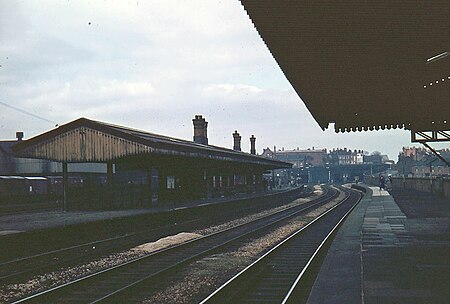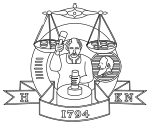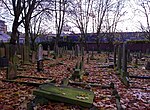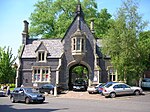Hockley railway station (West Midlands)
Disused railway stations in Birmingham, West MidlandsFormer Great Western Railway stationsPages with no open date in Infobox stationRailway stations in Great Britain closed in 1972Railway stations in Great Britain opened in 1854 ... and 1 more
Use British English from March 2017

Hockley was an intermediate station on the Great Western Railway's London Paddington to Birkenhead via Birmingham Snow Hill line, England, serving the Hockley area of Birmingham. It was around one mile from Snow Hill station. Opened in 1854, it lasted for the duration of the line's original life, eventually closing with the line in 1972.The station had two bay and one island platform, with the only pedestrian access for passengers to the latter being from below.
Excerpt from the Wikipedia article Hockley railway station (West Midlands) (License: CC BY-SA 3.0, Authors, Images).Hockley railway station (West Midlands)
Icknield Street, Birmingham Jewellery Quarter
Geographical coordinates (GPS) Address Nearby Places Show on map
Geographical coordinates (GPS)
| Latitude | Longitude |
|---|---|
| N 52.4907 ° | E -1.9177 ° |
Address
Hockley
Icknield Street
B18 6PP Birmingham, Jewellery Quarter
England, United Kingdom
Open on Google Maps








